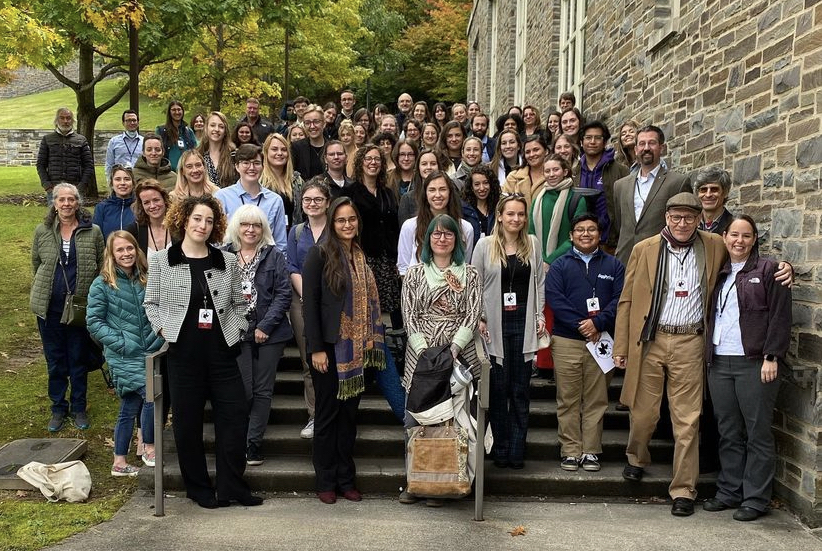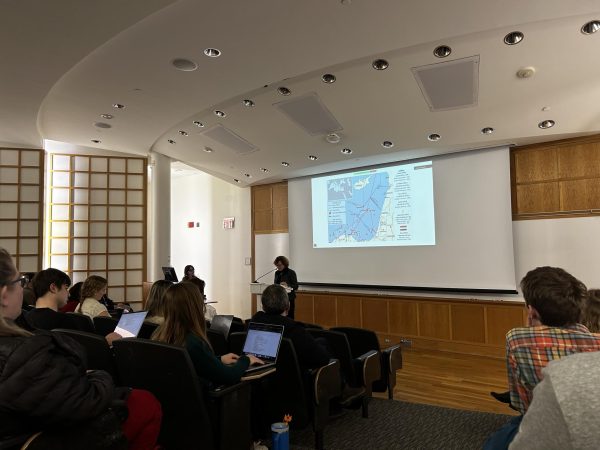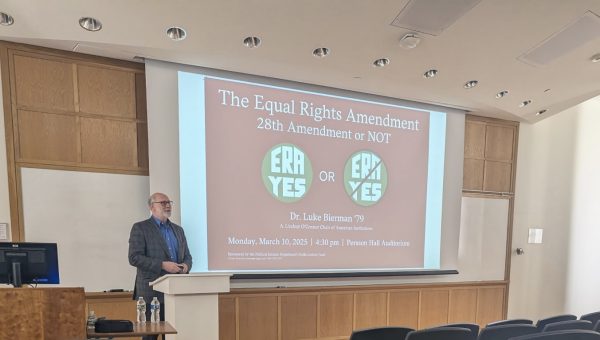Colgate Hosts 2022 Canine Science Conference
From Oct. 7 to Oct. 9, the biennial Canine Science Conference was held at Colgate University. The conference attracts prominent canine scientists from all over the world who come together and share their recent discoveries and findings on canine biology, behavioral components, anthropological studies and a variety of other features on the study of canines.
This year, the conference was organized by Associate Professor of Biology Ana Jimenez. Jimenez first heard about the Canine Science Conference in 2016 and was attracted to it because of her work on dog metabolism, specifically how dogs’ cellular metabolic rates change with their age. She attended the previous two conferences in 2017 and 2019, both hosted in Arizona by Arizona State University’s Professor of Psychology Clive Wynne. During the COVID-19 pandemic, the future of the Canine Science Conference became uncertain.
Impassioned about the conference and its ability to gather canine scientists from across the globe, Jimenez decided to write an email to Professor Wynne about the conference.
“I wrote Professor Wynne in December of 2021 to ask whether, after the pandemic, there would be another Canine Science Conference,” Jimenez explained. “He responded by saying that as much as he loved the conference, he was not up to hosting.”
However, with a desire for the conference to continue, Jimenez offered to organize the 2022 Canine Science Conference, and Wynne gave her his blessing.
Senior Kailey Paul presented at the conference and has done research with Jimenez previously.
“She loves dogs so much and is extremely knowledgeable about the subject so to see it go off without a hitch made me so happy to be present and able to tangibly see all her hard work come to a well-deserved fruition,” said Paul
Paul’s presentation focused on how dogs regulate their body temperature depending on their physical characteristics and also the environment around them.
“I have done a summer of research at Colgate with my mentor Dr. J for the past two years and this project took place during the first summer. This summer we synthesized the data, worked on writing the paper and submitting it for review/publication, and making the poster that was presented at the conference,” said Paul.
Senior Geddy Rerko also presented at the conference. Her research focused on thermoregulation in sled dogs.
“I prepared for the conference by reviewing the scientific literature that was foundational for our research and I made sure I was confident in the information I was presenting on my poster and to make sure I could answer questions from other members of the conference,” said Rerko.
The conference was organized and received quite a turnout. According to Professor of Biology Ken Belanger, the environment was filled with vivacious and welcoming energy.
“The conference attracted a broad range of people interested in dog biology, behavior, welfare — all of whom were scientists or those interested in the topic that traveled from places such as Australia, Germany, Switzerland and all over the United States,” Belanger said.
Belanger was one of the presenters at the conference and presented a poster with a few of his students. They presented a poster about the gut microbiome and how it affects sled dogs in response to exercise. Their group discovered that there seemed to be differences depending on whether dogs were taking glucosamine or not, as Belanger and his students found that glucosamine intake in sled dogs increases gut microbiome diversity.
“I was excited to get a group of people here on campus who were interested in dog biology and that there was a new type of conference for me to attend,” Belanger said.
In addition to presenting posters and organizing the conference, many Colgate faculty and students attended the conference as audience members, such as Professor of Biology Barbara Hoopes. As a dog breeder, Hoopes was greatly interested in the Canine Science Conference.
“It’s quite different from the conferences that I usually attend, such as the Dog and Cat Genomics Conference,” Hoopes said. “As a dog breeder, a conference solely focusing on dogs and their biology were interesting to me, separate from the research I do.”
Hoopes enjoyed the multitude of presentations at the conference, notably the “Dog Aging Project,” a project where researchers work with data from thousands of dogs and study biological factors that correlate with health longevity in dogs. Professor Hoopes stated that she enjoyed projects like the Dog Aging Project due to their plenary nature.
“There were talks and presentations focused on dog behavior and biology,” Hoopes said. “In addition, there was a great mix of plenary talks at the conference. There was a whole gamut regarding different kinds of talks, where researchers were happy to share their findings with others.”
Paul enjoyed attending different presentations at the conference and found it helpful to interact with other presenters throughout the weekend.
“Meeting prominent researchers and scientists within the field, from all over the world, is such an amazing opportunity that I am so thankful for,” said Paul.
Rerko also spoke about the connections she made with other researchers.
“It was a really cool experience to have so many academics and other researchers be interested and ask questions about my research as an undergrad. I was very nervous, but people were friendly and engaging,” said Rerko.
The Canine Science Conference attracted a variety of global researchers and was a collaborative environment of passionate researchers who were excited to share their findings regarding canine biology and behavioral factors.






